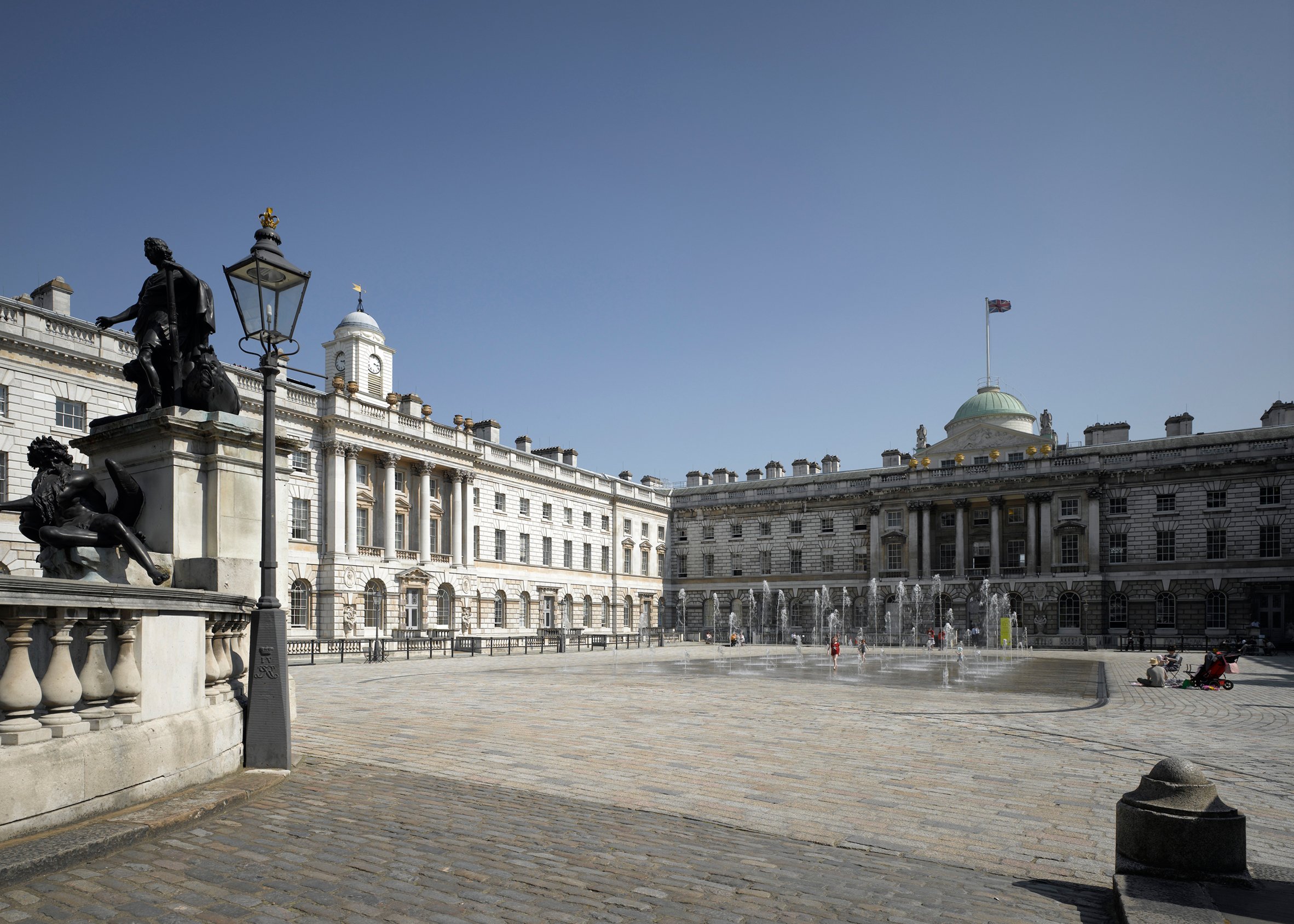London Design Biennale 2016: with the first ever London Design Biennale set to open next week, Dezeen reporter Jessica Mairs has selected 10 attractions that aren't to be missed, including a forest dining room and a giant weathervane.
Architects and designers from 37 countries are taking part in the major exhibition, which will take over London's Somerset House between the 7 and 27 September 2016.
The theme for the inaugural London Design Biennale is Utopia by Design, selected by biennale director and ex-Icon editor Christopher Turner to mark the 500th anniversary of the publication of Thomas More's Utopia.
Following the model of Venice's biennial art and architecture festivals, participants including German designer Konstantin Grcic, British design duo Edward Barber and Jay Osgerby, and Mexican architect Fernando Romero will respond to issues ranging from migration and pollution, to weather and food.
The biennale coincides with the annual London Design Festival, which takes place from 17 to 25 September.
Here's our top pick of London Design Biennale installations:
Eatopia
Architect Rain Wu and designer Shikai Tseng have teamed up with chef Chung-Ho Tsai to create a utopian dining experience for Taiwan's Biennale offering.
Visitors to Eatopia will dine in a forest-like setting inside Somerset House, where they will be surrounded by cast tree trunks and woodland sounds.
The culinary installation aims to present Taiwan as a melting pot of cultural identities that is reflected in the nation's design output.
Discovering Utopia: Lost Archives of Soviet Design
Russia will present an archive of utopian proposals drawn up by Soviet-era designers, but forgotten after the breakdown of the Soviet Union in the early 1990s.
Most of these experimental designs created under the USSR's Communist regime never left the drawing board and were stowed away in the archives of the Moscow Design Museum. They will now be shown publicly for the first time at the biennale.
Parawifi
When Cuba introduced public Wi-Fi in 2013, smartphone users began to flock around hotspots in the country's capital Havana, crowding benches, steps and kerbs.
In response, designers Luis Ramirez and Michel Aguilar have developed a modular seating system to protect internet-users from the elements.
Seating cubes stacked one on top of each other propose a new type of street furniture for the crowds, allowing users to recharge devices using in-built solar panels. A prototype will be installed inside Somerset House – traditionally a Wi-Fi blackspot.
Forecast
Designers Edward Barber and Jay Osgerby have created a weathervane-like structure named Forecast for the UK's entry to the biennale.
The group of "mast masts" will be installed in the courtyard at Somerset House and feature movable parts designed to rotate in the wind.
The structure is intended to reference the nation's obsession with the weather, as well as its nautical history and the world-class wind farms developing off its coast.
Welcome to Weden
Sweden has invited 15 pairs of designers and manufacturers to collaborate on products for its Biennale exhibition Welcome to Weden.
The aim to define a new utopian relationship between designer and manufacturer, where the risks and rewards are shared more equally.
By placing an emphasis on small-scale and local production, curator Jenny Nordberg aims to establish an alternative model to the mass-production methods employed by large Swedish companies like Ikea.
Brodie Neill's Plastic Effects
Tasmanian designer Brodie Neill aims to draw attention to the trillions of plastic objects polluting the world's oceans.
For Australia's entry to the biennale, Neill has collected and recycled tiny pieces of plastic from the sea to produce a terrazzo-like composite and moulded it into a table.
The Counterculture Room
Chile's entry is based on a utopian project proposed by Salvador Allende's socialist government in the early 1970s.
Cybersyn was a forerunner of today's "smart city", and proposed presenting economic information electronically and in real time to give Chileans direct access to decision-making.
Design studio FabLab Santiago will recreate the experience within The Counterculture Room with a reconstruction of Cybersyn's operations room.
Human.Touch
Israel's Human.Touch exhibition showcases two projects aiming to resolve social issues through design.
Yaniv Kadosh's AIDrop proposal would see self-propelling devices deploy first-aid kits over disaster zones inaccessible by road.
Sharona Merlin has designed a pair of speakers named Louder, which aim to translate sound into visual textures and vibrations for the deaf or heard of hearing.
Border City
Architect Fernando Romero considers the urban design of Mexico's border cities, where over 100 million people now live on the cusp of two nations.
Romero's conceptual masterplan features a network of hexagonal zones with star-shaped streets radiating from their centres.
This formation is designed as a replicable model for other frontier cities, allowing room for expansion as populations grow and migration increases.
LeveL
Viennese design studio mischer'traxler' will create a moving light sculpture named LeveL for Austria.
The room-sized mobile will comprise bulbs perched on the end of easily unbalanced branches. The whole structure is designed to move as visitors walk through the space.
The lights will be at their brightest when the mobile is still but dim when unsettled – a feature intended to be symbolic of the precariousness of utopian ideals.

